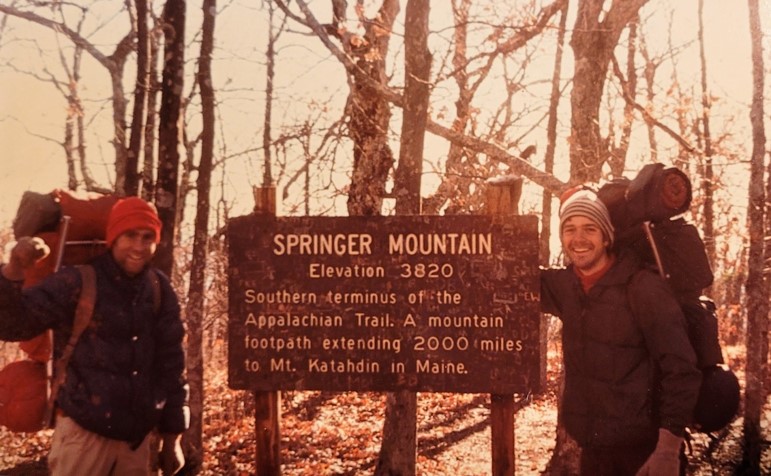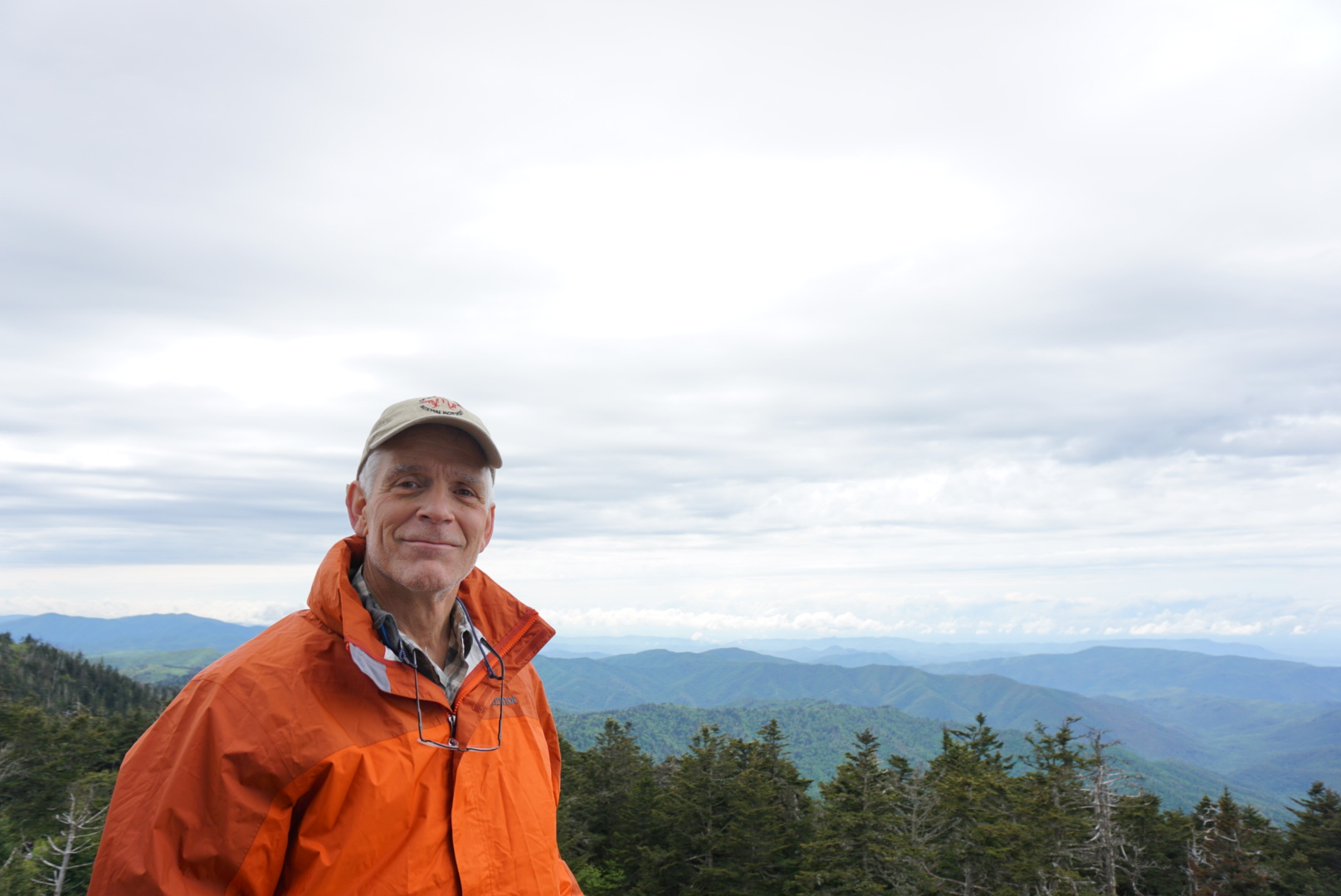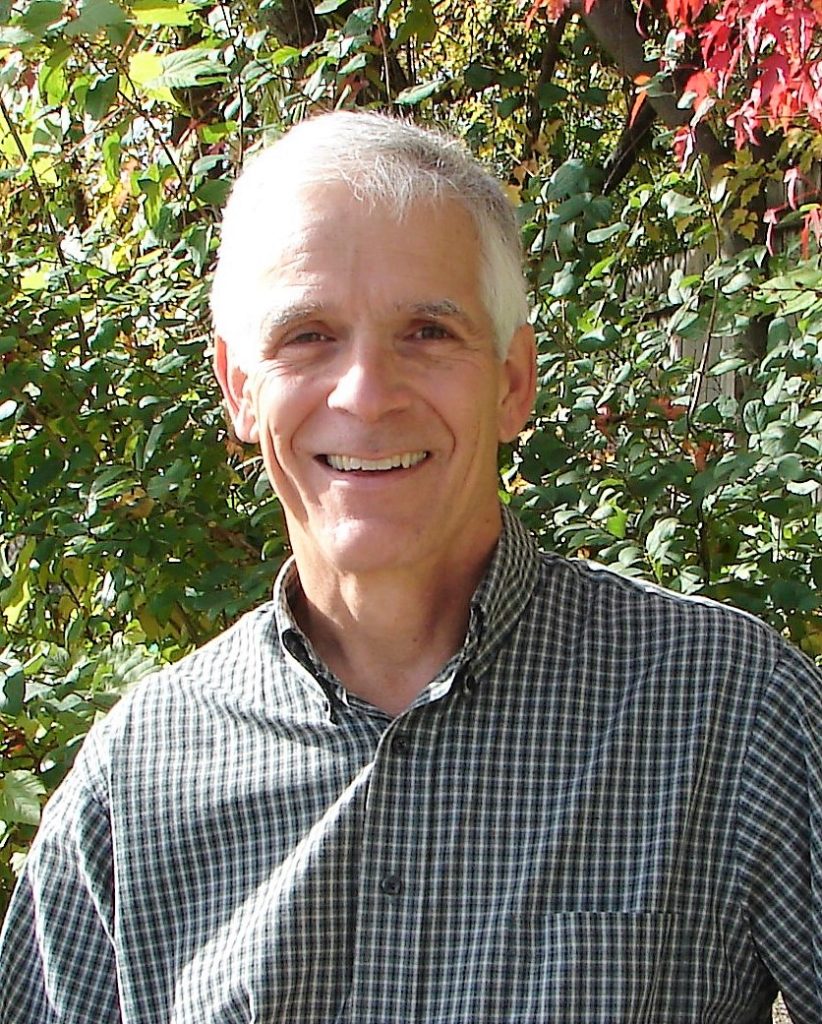
After four decades of working for the Wisconsin Geological and Natural History Survey (WGNHS), Director and State Geologist Ken Bradbury retires this month. A leading expert on groundwater, Bradbury’s interest in geology began, unsurprisingly, with water.
“We lived on a farm, and water was pretty important,” he says. “My dad had built a farm pond, and I was a little kid, but I got to see the excavation and how they filled it with water, and how all that went.”
Bradbury also spent a lot of time scouring the creek that crossed their land for fossils. He and his friends prized what they called “dinosaur toes,” horn-shaped fossils up to four inches in length. Bradbury later learned that these were not, in fact, prehistoric bones but rugose corals and that their farm in southeastern Indiana was one of the best places in the country to find them.
“They were fantastic fossils,” Bradbury says. “Some of the best Ordovician fossils that you can find anywhere, and I didn’t even know it because I would use them for my 4-H projects and my Cub Scout projects.”
Those early days of digging in the creek bed propelled Bradbury into a distinguished career as a hydrogeologist. He’s developed groundwater models, published nearly a hundred articles and shared his findings with audiences across the state. Not only does his career reflect a profound commitment to the Wisconsin Idea, but it’s also been a lot of fun.
Getting in on the ground floor of groundwater research
For many, the word “geology” conjures images of rocks, not water. But as a hydrogeologist, Bradbury studies both. The location, movement, amount and quality of groundwater are influenced by the type and structure of the surrounding rock. It is an important field of study, especially if you get your drinking water from a well.
When Bradbury began his career, however, water supply and water quality were not discussed or studied much in geology. Groundwater, if anything, was seen as a nuisance.
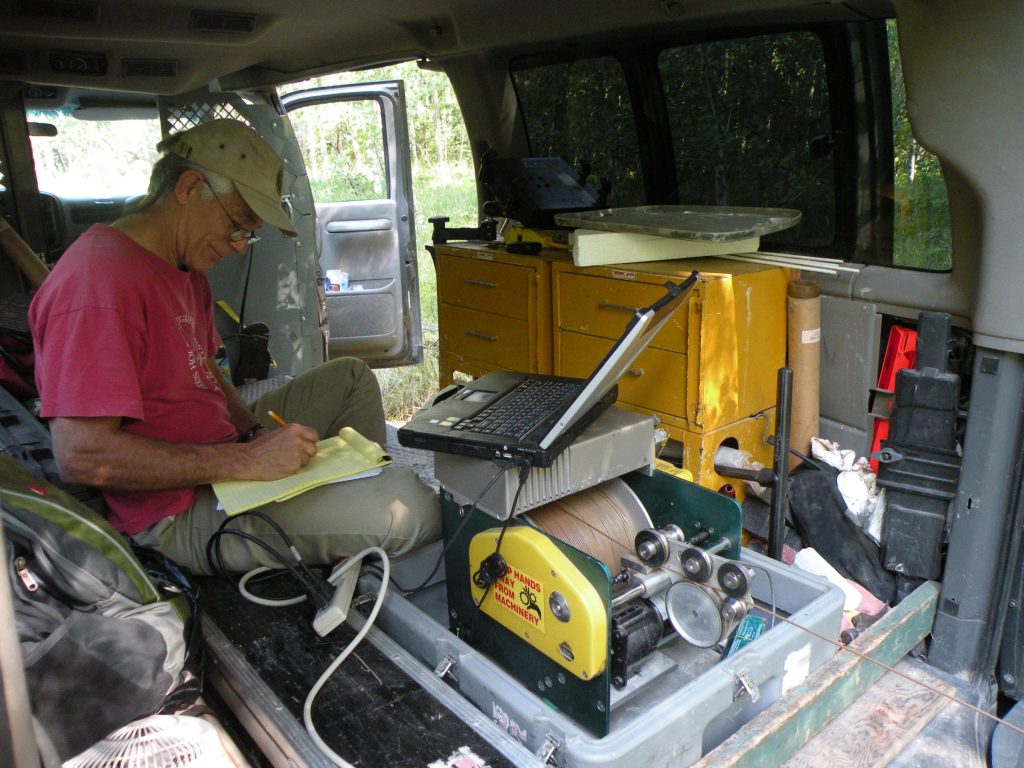
“When I started, frankly there wasn’t broad interest in groundwater,” he says. “It was viewed more as a problem, in the sense that groundwater is the stuff you need to manage if you’re digging a hole and it’s flooding, or if you’re developing a mine and it’s full of water. You have to get rid of the groundwater, and the understanding of contaminant movement in groundwater was just beginning.”
But Bradbury had an enduring interest. After getting a bachelor’s degree in geology at Ohio Wesleyan University, he pursued a master’s degree at Indiana University, where he learned about water chemistry, surface water hydrology and soil science working on a project at an artificial reservoir. He then took a job at the Southwest Florida Water Management District.
It was there he discovered two things: Florida is hot, and he wanted a deeper understanding of groundwater issues. So, he left for colder climes and enrolled in the PhD program at the UW–Madison Department of Geology and Geophysics to study hydrogeology.
Bradbury entered the field at a pivotal moment. Scientists were just starting to use a new tool to map the movement of groundwater: computer modeling.
“When I started out, [hydrogeologists] were analyzing one well at a time,” Bradbury explains. “When computer modeling came along, it allowed people to look at and begin to understand whole watersheds and groundwater systems at a time.”
Bradbury’s advisor at UW–Madison, Professor Mary Anderson, also happened to be a national expert in groundwater modeling—she literally wrote the textbook on it—and Bradbury was her second PhD student. He then brought that knowledge to the Survey after graduating, where he made a career of sharing it with colleagues and applying it to watersheds across the state.
Doing and communicating the science
One of Bradbury’s more recent groundwater modeling projects involved the Little Plover River basin in central Wisconsin. The river had been experiencing dry spells and reduced flow, so the Wisconsin Department of Natural Resources commissioned WGNHS and the U.S. Geological Survey to develop a model mapping the relationships between groundwater, lakes and streams and the high-capacity wells used to irrigate vegetable crops in the region.
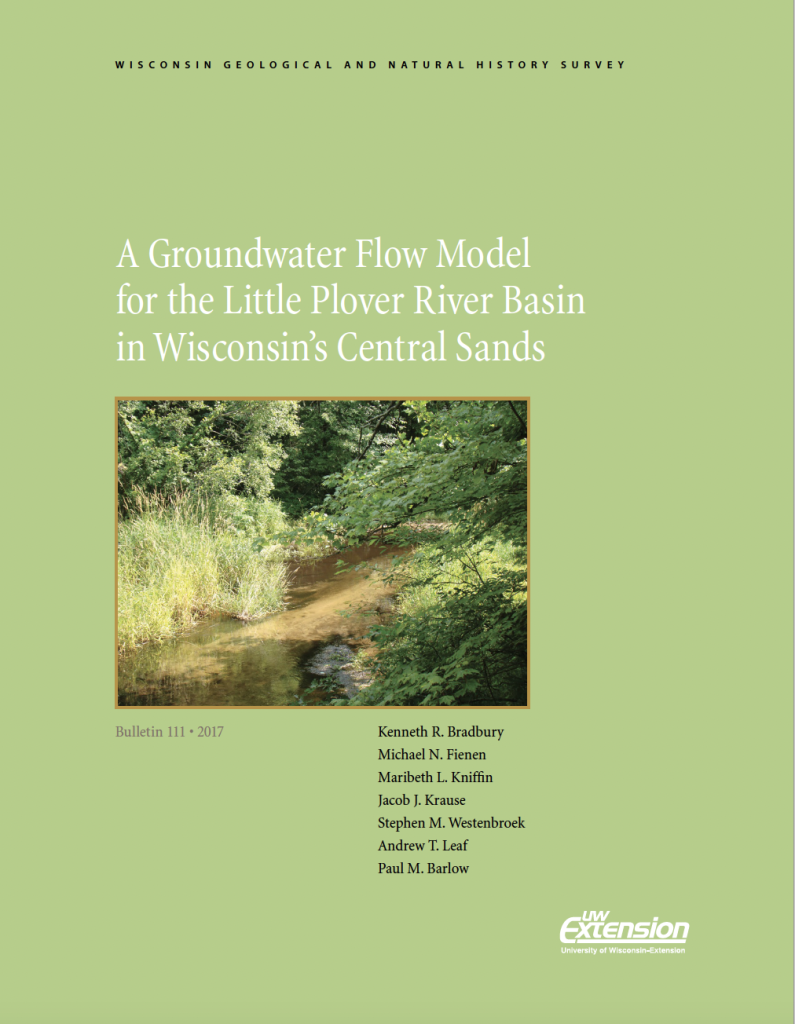
The model helped users answer an important question: If I add or take water away from here, what happens there?
Bradbury says it was a challenging project. The science was more complicated than anticipated, as was navigating the relationships between environmental and agricultural groups. The experience underlined the importance of clear, jargon-free communication, something Bradbury practices often in his role at WGNHS.
“One of the skills that I had to learn and people here [at the Survey] have to learn is that the academic explanation doesn’t work very well in the public,” Bradbury says.
It’s a balance between simplifying an explanation but not talking down to your audience.
“We want to give people the scientific facts in a way they can understand.”
A dual role
The last seven of Bradbury’s forty years of working with WGNHS have been as director and state geologist. It’s a unique position in that it’s a two-for-one deal, and the state geologist job is codified in state statute.
“The state geologist ‘hat’ is [answering] questions about geology and giving presentations and talks to groups, from the legislature to civic groups to whomever wants to know,” says Bradbury.
The state geologist also serves as a resource to state agencies. The Department of Natural Resources has questions about mines; the Department of Transportation has questions about raw materials for building roads; the Department of Health Services has questions about radium in water. Bradbury says he’s not an expert on every topic, so he’ll direct questions to those who are. It’s important to him that the public receives accurate, objective information.
“I hope the state geologist can be a trusted voice of fairness and reason and not take sides on issues to help the people of Wisconsin to understand these things.”
As state geologist and director of WGNHS, Bradbury also gets a fair share of “weird rock” questions from the public. An unexpectedly popular topic? Meteorites. A helpful rule of thumb: if you think you have one, you probably don’t.
“I don’t think we’ve ever had one that’s really, truly a meteorite,” Bradbury laughs. “The people always want to find a meteorite.”
Those curious about their weird rocks can check out the WGNHS website, which provides a wealth of information on minerals and fossils, or visit the core repository (which you can read more about in another blog post.)
Looking forward
After a career of innovative research, teaching, and traveling around the state and world, what will Bradbury miss the most?
The people. He describes the cheerful mood of the office that morning.
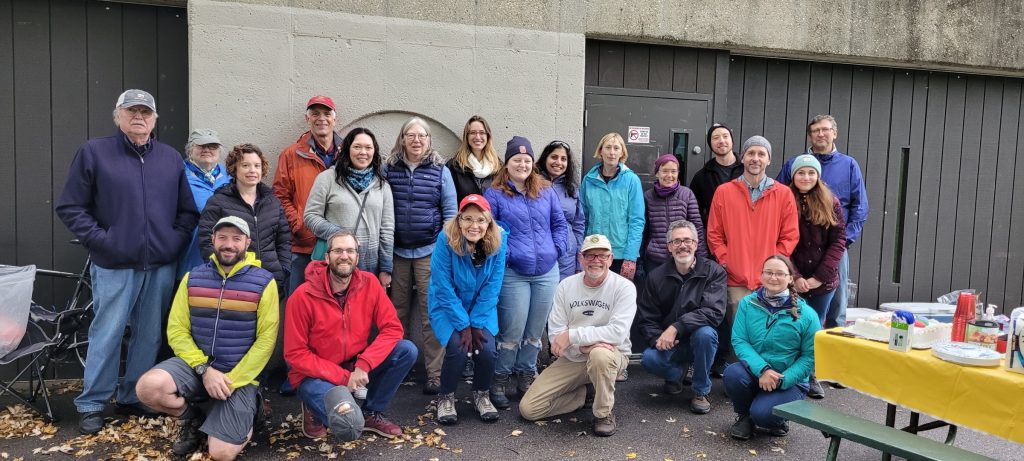
“There were several people ready to go out into the field, and it’s a beautiful morning. They’re loading the truck, they’re heading up north, and they said, ‘Oh Ken, you’re going to miss the fun.’ That’s what’s fun about being at the Survey—people enjoy their work. I think we have a great staff, and I enjoy all of them.”
Bradbury won’t stop having fun once he retires, however. An avid cross-country skier, he plans to complete the Birkebeinerrennet in March, a 54-km race across the mountains in Norway. There will be more biking, hiking, and camping as well as the occasional lecture or educational hike. He’ll also retain emeritus status and plans to finish writing several reports and papers, one of which recounts the many projects he and colleagues did in Door County.
Bradbury says geology has been a rewarding career, one full of opportunities to get outside and learn more about the world. Geology is more than rocks, and even water.
“It connects so many parts of the world. So many threads in society get connected by geology, but people don’t think of it that way. Energy, minerals, water, crops—all of these things that are pretty fundamental to society. If you keep drilling down, you find they have something to do with geology.”
